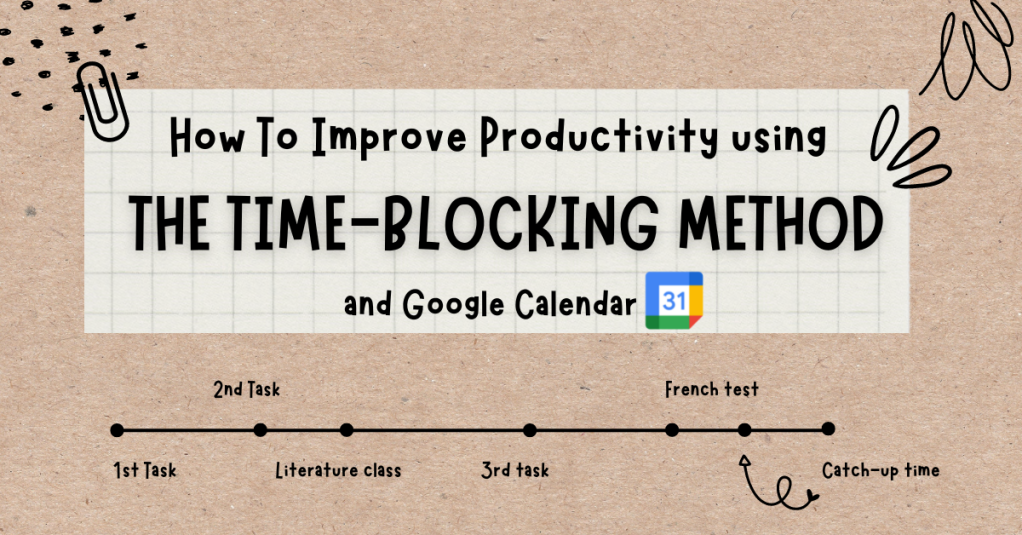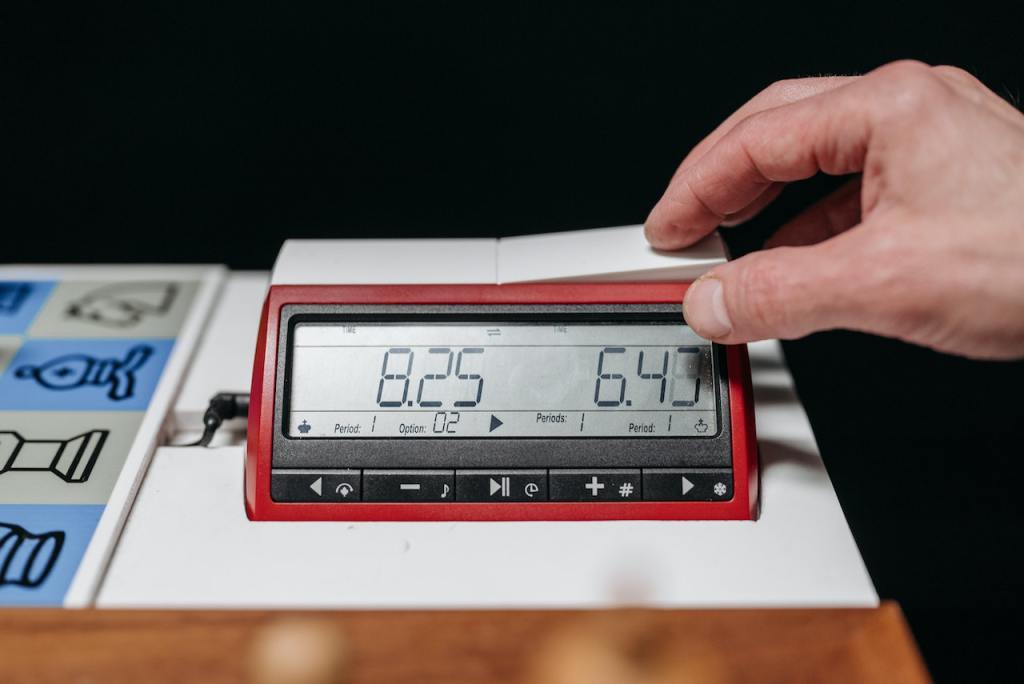“Less mental clutter means more mental resources available for deep thinking.”
Cal Newport, Deep Work

We all think too much about too many mundane things. These mental clutters can be resolved without giving much thought to them. Instead, we all spend a great amount of time sorting out through these clutters like which movie should I watch during the break or whether I should do the assignment before the revision or after. Our time and energy get invested in planning our day-to-day activities instead of actually doing those activities. This creates a sense of being busy but with no productive results.
Instead of being stuck in forever planning mode, you need to follow some planning techniques so that you can focus on the actual work from the to-do lists. You can make a weekly to-do list and distribute the tasks throughout the week using the Time-Blocking method. Then you can review and tweak the time blocks regularly to make sure you have desired focus for your tasks. In this way, you will able to finish your project and focus on your guitar learning too. Now, let’s learn more about Time-blocking method for students.
What is Time Blocking Technique?
The Time-Blocking method is a time management method used to divide the time of your day into blocks and assign it to the tasks from your to-do list. Each of these blocks can be of varied length according to the task assigned in that particular block of time. Instead of simply having a to-do list of tasks, you can actually tick off those tasks by assigning exact time blocks and working within the timeframe.
This technique has been used by a lot of people for a very long period of time. Doing a fixed chore for a fixed duration of time for a fixed period regularly is the beginning of this technique. We all have been following this unknowingly, but to gain the full value of this method, you need to tweak your time blocks according to the demand of the tasks. Setting a time block weekly or daily prevents the waste of time as you can adjust your time blocks according to the progress of your project.
Read this book review of Everyday Hero Manifesto for similar experience.

How does it work?
For using the time-blocking technique, you need to distribute your time into small blocks of time. Then you can assign a particular time block to a particular task. You should be aware of how much time is required to do a certain task, and use the appropriate time block length for that task.
This time block is now your reference as well as your challenge. You need to finish your task within the stipulated time block or you might not be able to finish the task. Time blocking ensures that you don’t have spare time to think and scroll, and every minute of your day has been assigned for your work. It removes the need of making choices between tasks and lays down a step-by-step guide to follow.
If you are wondering about breaks, then don’t worry. The breaks are also accounted for in the time-blocking method. Thus, it is not as exhausting as having every minute accounted for seconds. You can pair Time Blocking technique with the Pomodoro Method. This will help you finish the required task without burning yourself out and keeping you refreshed. The Pomodoro method uses a fixed time period of deep work paired with breaks.

Why does it work?
Time Blocking works because when you assign a particular time block for a certain task, all your focus is only on that single task. You don’t need to think about the other priorities of life because you have already allotted time for that. You can freely focus on the task at hand. This method helps the user to be productive and accomplish better than usual results.
Also, it creates a sense of an artificial deadline in your mind. It is the same case as finishing your assignment the night before its submission, only now, you will have enough time to review and revise it.

How to use it in our studies?
Studies are just like tasks and works assigned to us. If you want to use the time-blocking method for your studies, you should divide your subjects into small chunks or chapters. If your chapters are too big, then break them down topic-wise. You can make a weekly to-do list of the topics or chapters you need to cover for that period of time. We all have used the time-blocking method in the past, but without having a definite task in mind, it will become a tedious period of indecisiveness. Thus preparing a to-do list is the first and crucial step for this time management method.
After you have prepared a list of tasks, you need to start blocking approximate times on your calendar. Your time block is your motivation and your deadline for the task. You have to finish it within the stipulated time.
However, I will suggest keeping up a ‘catch-up’ time block on your daily schedule. During this time, you can catch up on the tasks that have exceeded their time limits or have remained incomplete throughout the day. This will ensure that you will have breathing space between your tasks, and a call from your long-lost friend won’t derail your progress.
You can also read this article to manage studies with your hobbies effectively.
How to Use Physical Journal or Google Calendar App for Time Blocking Technique?
Everything is online today. If you need some information, you turn to the internet. This is the boon and the curse of this tech age. The same platform that provides resources acts as the hook of distractions for us. So, if you want to begin your study planning in some old-school way, you can still use the time-blocking technique in a diary or journal.
For using the time-blocking method in a diary, a journal, or a notebook, you need to first determine the to-do list of the day or week, for your studies. After you have finished with that, you can create a routine of time blocking or unique daily time blocks for your days. Assign those tasks to the respective time blocks. Your time block challenge is ready to be tackled by you. Make sure you review your progress every weekend and tweak your schedule accordingly.
You can also use the Google Calendar app from your phone for using the time-blocking method in studies. You can set reminders in your calendar app, and while setting that reminder, you can change the duration of the reminder according to your time blocks. If you use Google Calendar, then the calendar app will show you the time blocks, automatically when you open it in week view mode. You can color code your tasks, set recurring tasks for alternate days or specific days of the week (aka Day Theming), sync your time blocks with your other events, arrange the tasks such that the boring ones get paired before the interesting ones, etc. You can also set a reminder for your tasks and be updated about your upcoming tasks.
How to Assign Tasks in Time Blocks/ Tips on Time-Blocking Your Day
While time-blocking your days, you should be clear with the instructions you have given to yourself. Here are some tips that you should keep in mind while assigning work to your time blocks and vice versa:
- Make sure you have estimated your time correctly. Having unrealistic expectations will lead to stress and decreased productivity levels. So, keep your time blocks according to the difficulty of your task.
- Put the difficult and tedious tasks at the beginning of the day, and the easier ones at the end of the day. This is because as you continue to work, your chances of getting distracted by other things increase. So, you should use your high focus and fresh mind to cover up the difficult tasks.
- Write down your time blocks to the last bits. Include your lunches, dinners, travel schedule, classes, gyms, etc. in your time block calendar to get an idea of available time.
- For long tasks with time blocks longer than 2 hours, use Pomodoro Method and account for the breaks as well.
- Use the time bits in-between chores such as traveling, cooking, and cleaning for your comfort habits such as listening to podcasts, watching something, reading books, talking with friends and family, etc.
- There are times when sudden circumstances arise that lead to the failure of a time block task. For those emergencies, keep your time blocks flexible. You should keep a ‘Catch-Up’ time block on your schedule. This will help you to manage your day and emergencies without getting stressed about deadlines and tasks.
- If you need, you can ditch your plans in the middle of the day and revise the time blocks to suit the situations at hand. Don’t hesitate to interrupt the ongoing schedule if need arises because the purpose of the time block is to help you get productive, not restrict it.
- Have some free time between your time blocks for rest and refresh yourself.
- If you have different subjects to study, then try to mix and match the time blocks with different subjects to keep yourself interested.

Other Apps Suitable for Time-Blocking Method:
I find Google Calendar to be an efficient and non-distracting app with no-nonsense and a perfect fit for my time-blocking method. However, you might want to use some other tools with more features. Here are other suitable apps for the time-blocking method:
References for Further Reading:
- https://todoist.com/productivity-methods/time-blocking
- https://en.m.wikipedia.org/wiki/Timeblocking
- Deep Work: Rules for Focused Success in a Distracted World by Cal Newport
- https://www.goodreads.com/en/book/show/25744928&ved=2ahUKEwi68_SdsPb6AhV7cGwGHc1vAO4Qjjh6BAg7EAE&usg=AOvVaw2Da9i_l09WL43hEt3wk1Sv


